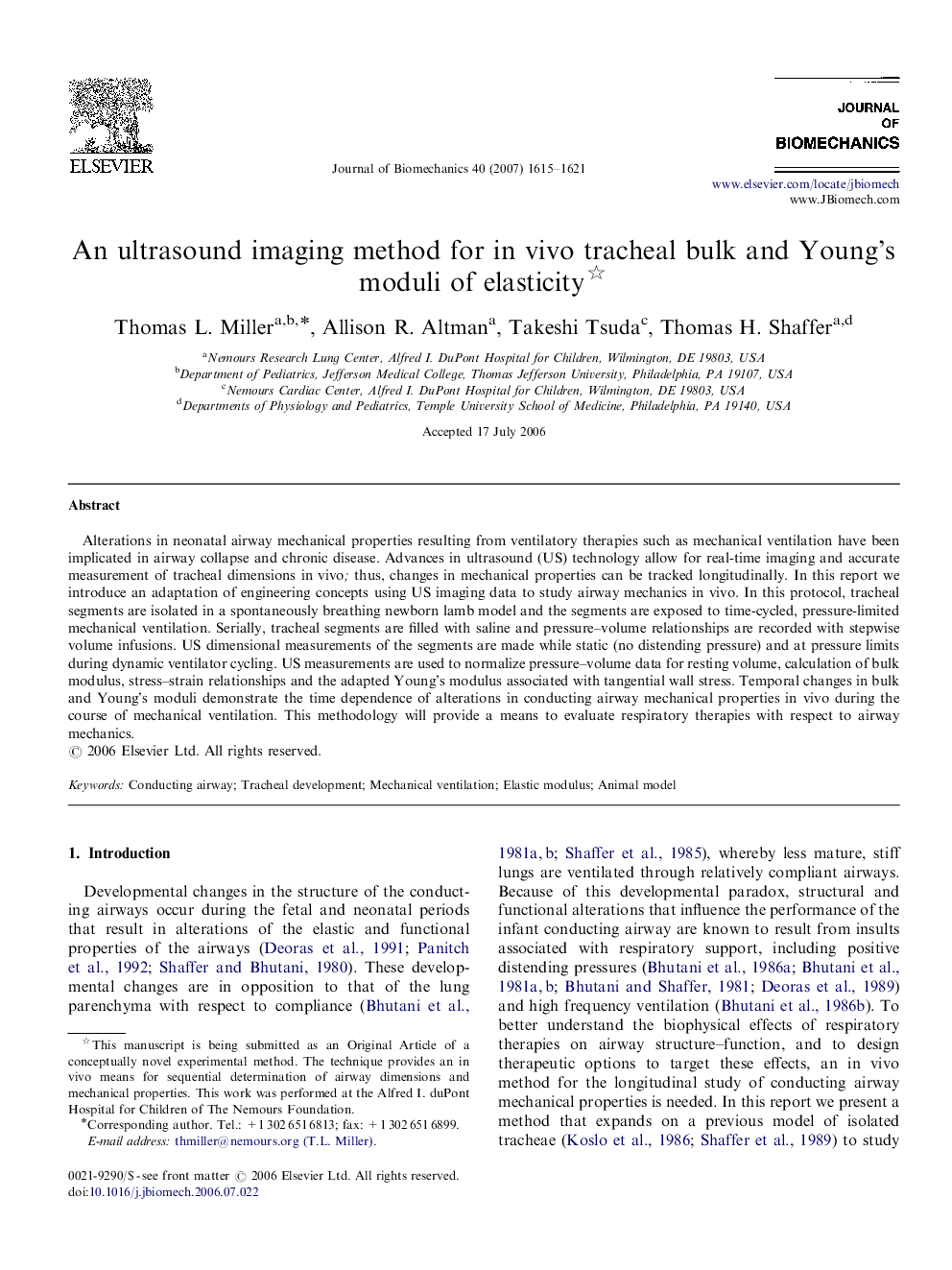| Article ID | Journal | Published Year | Pages | File Type |
|---|---|---|---|---|
| 874521 | Journal of Biomechanics | 2007 | 7 Pages |
Alterations in neonatal airway mechanical properties resulting from ventilatory therapies such as mechanical ventilation have been implicated in airway collapse and chronic disease. Advances in ultrasound (US) technology allow for real-time imaging and accurate measurement of tracheal dimensions in vivo; thus, changes in mechanical properties can be tracked longitudinally. In this report we introduce an adaptation of engineering concepts using US imaging data to study airway mechanics in vivo. In this protocol, tracheal segments are isolated in a spontaneously breathing newborn lamb model and the segments are exposed to time-cycled, pressure-limited mechanical ventilation. Serially, tracheal segments are filled with saline and pressure–volume relationships are recorded with stepwise volume infusions. US dimensional measurements of the segments are made while static (no distending pressure) and at pressure limits during dynamic ventilator cycling. US measurements are used to normalize pressure–volume data for resting volume, calculation of bulk modulus, stress–strain relationships and the adapted Young's modulus associated with tangential wall stress. Temporal changes in bulk and Young's moduli demonstrate the time dependence of alterations in conducting airway mechanical properties in vivo during the course of mechanical ventilation. This methodology will provide a means to evaluate respiratory therapies with respect to airway mechanics.
